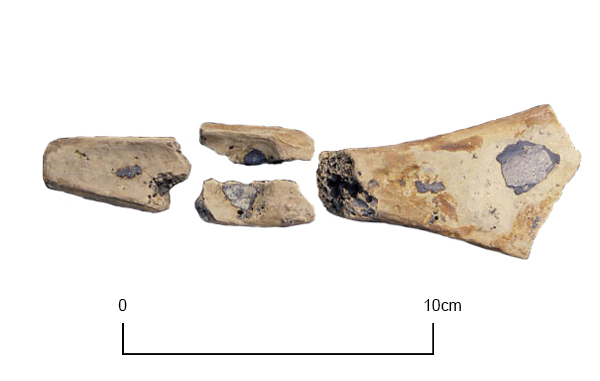 The image for Day 219 of the VM_365 project shows one of the bronze palstave axes that were found packed together in a hoard found at St Mildred’s Bay near Birchington. The conditions of the axe is very poor, the cast metal is crumbling and discoloured and it has broken into several pieces.
The image for Day 219 of the VM_365 project shows one of the bronze palstave axes that were found packed together in a hoard found at St Mildred’s Bay near Birchington. The conditions of the axe is very poor, the cast metal is crumbling and discoloured and it has broken into several pieces.
The wave cut shelf on the north coast of Thanet has been the site of the discovery of many truncated prehistoric and medieval pits, exposed as the tides cut down the chalk cliffs along the coastline. These archaeological features are known to be remnants of settlements that once occupied the rolling hill tops that occupied the surface of the land that was broken down by the sea.
The unique conditions of the preservation of the features below the sea and the sand of the foreshore has created a very different level of archaeological preservation than is generally found on the sites within Thanet’s present landmass. A woven timber pit lining preserved in one of the truncated pits at St Mildred’s Bay was shown in a previous post for VM_365 Day 65.
On the other hand, the saturation of the fills with sea water has taken a heavy toll on the bronzes that were discovered in one of the St Mildred’s Bay hoard. Unlike some of the stunningly well preserved bronze hoards that we have featured in previous VM_365 posts, the metal in the St Mildred’s Bay bronzes is decayed, discoloured and fragmented, a state that was particularly advanced in the palstave shown in today’s post.
One thought on “VM_365 Day 219 The toll of tide and time”